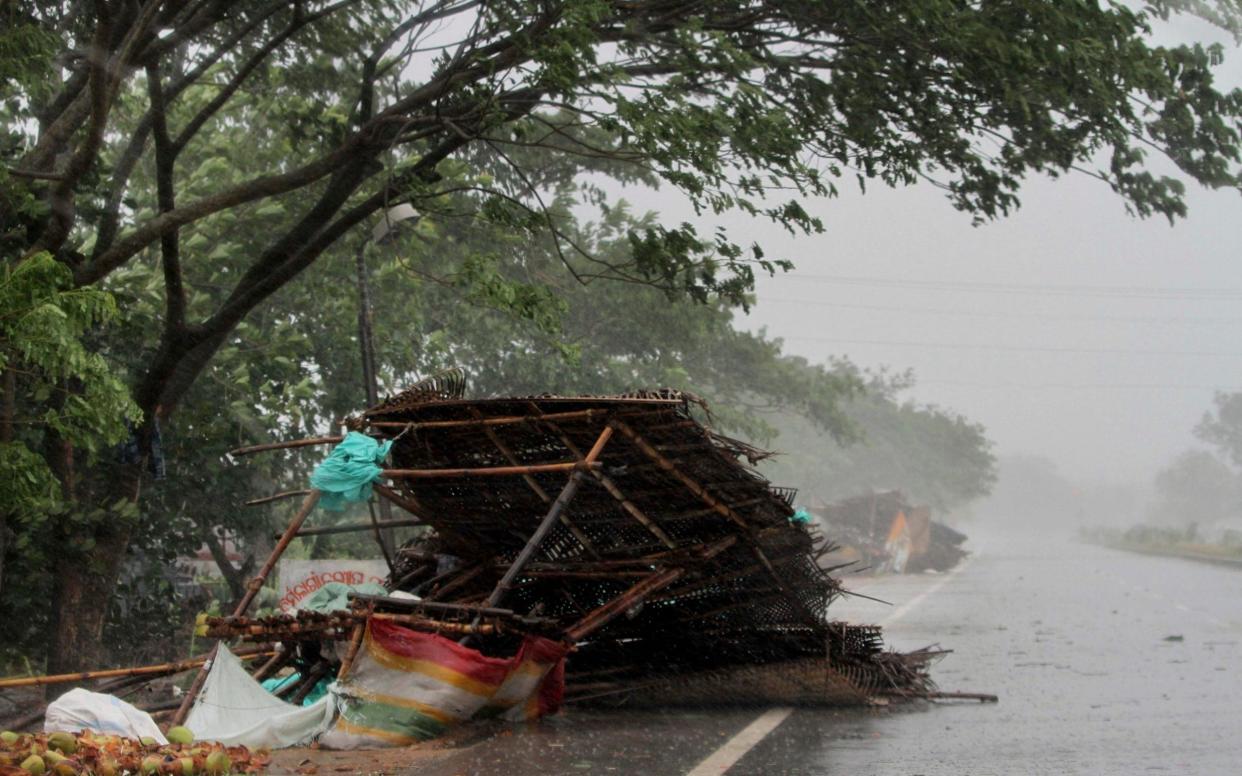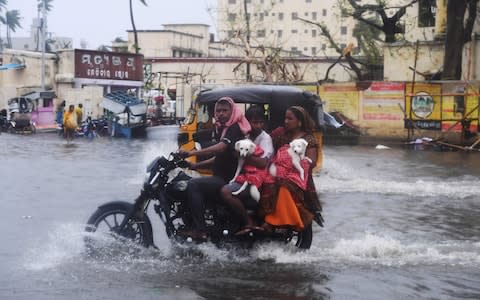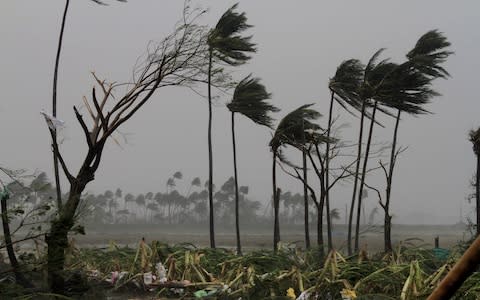Cyclone Fani wreaks havoc across east coast of India leaving three dead

Three people have been killed as the strongest cyclone to hit India in 20 years left a trail of destruction through the coastal state of Odisha on Friday.
Wind speeds of over 200kmph were measured as Cyclone Fani made landfall in the resort town of Puri before moving inland and ripping through the state capital of Bhubaneswar.
The state government was forced to evacuate roughly 1.2 million people to 800 cyclone shelters to wait out the worst of the damage.
Arun Bothra, the Inspector General of Odisha Police told The Daily Telegraph that Bhubaneswar had been hit the worst and that the "damage [there] is massive."
Mr Bothra said that there had been widespread destruction of property across the city.
“My own house has been damaged and all the trees gone,” he said.

Winds were so severe that they ripped the roofs off buildings and toppled industrial cranes, trees and double-decker buses.
The eastern coast of Odisha has seen flooding with heavy rains submerging large areas of Puri.
At least 160 people in the town have been injured, many by flying debris.
Witnesses told The Telegraph that 300 hotels on the town’s shoreline were badly damaged with rooms flooded and windows smashed.
In Puri, a teenager was reportedly killed when a tree collapsed on him, while in Nayagarh district a woman died after being struck by flying concrete debris.
The third casualty was a 65-year-old woman who died of a suspected heart attack after seeking refuge at a cyclone shelter.

After weather reports warned of the severity of the storm, the Odisha government organised a mass evacuation, which is thought to be the largest in the country's history and believed to have saved thousands of lives.
In 2013, the evacuation for Cyclone Phailin saw 550,000 people moved away from the coastline.
Indian preparations for cyclones have greatly improved in recent years due to meteorological advances and lessons from the tragedy of the region's last super cyclone in 1999, which killed 10,000 people.
The high death toll came after the state government failed to provide enough storm shelters for its population, who were left to fend for themselves in 260kmph winds.
The authorities shut down the airport in Bhubaneswar until further notice and every train running down Odisha’s east coast was cancelled today.
In Mancheswar, a 31-year-old railway employee was relieved after going into labour on Friday morning.

Despite the storm raging outside doctors managed to deliver the baby girl safely, who was named Lady Fani.
Meteorologists have predicted that Cyclone Fani will weaken in the next 24 hours as it heads further inland. However, the state of West Bengal and the neighbouring country of Bangladesh remain on high alert as the cyclone is expected to reach towns and villages along the banks of the Ganges.
Rising water levels on the low plains either side of the border could be hit by landslides and a storm surge four-to-five feet higher than normal astronomical tides, the Dhaka Tribune reported.
There is particular concern that the winds and rain could cause mayhem in the densely populated coastal districts in Bangladesh.
Humanitarian groups are especially concerned the Rohingya refugee camps in Cox’s Bazaar could face devastation as high velocity winds and violent rains slam down on the makeshift camps.
Zia Choudary, country director of Care Bangladesh, an NGO, said: "The densely populated Rohingya refugee camps in Cox's Bazar are susceptible to deadly mudslides triggered by torrential rainfall.
“The concentration of the 1 million displaced Rohingya people in Cox's Bazar is now among the densest in the world and, even if the region is not hit directly, the impacts of Cyclone Fani will create havoc."
The effects of the cyclone were felt as far as Nepal, where its government ordered all summit attempts on Mount Everest to return to Base Camp after high winds blew 20 climbers' tents off the side of the mountain.
Narendra Modi, the Indian prime minister, announced yesterday that 10 billion rupees (£110.6 million) has initially been set aside for cyclone-hit areas while the Indian Army, Navy and Coast Guard has been deployed to deliver aid.

